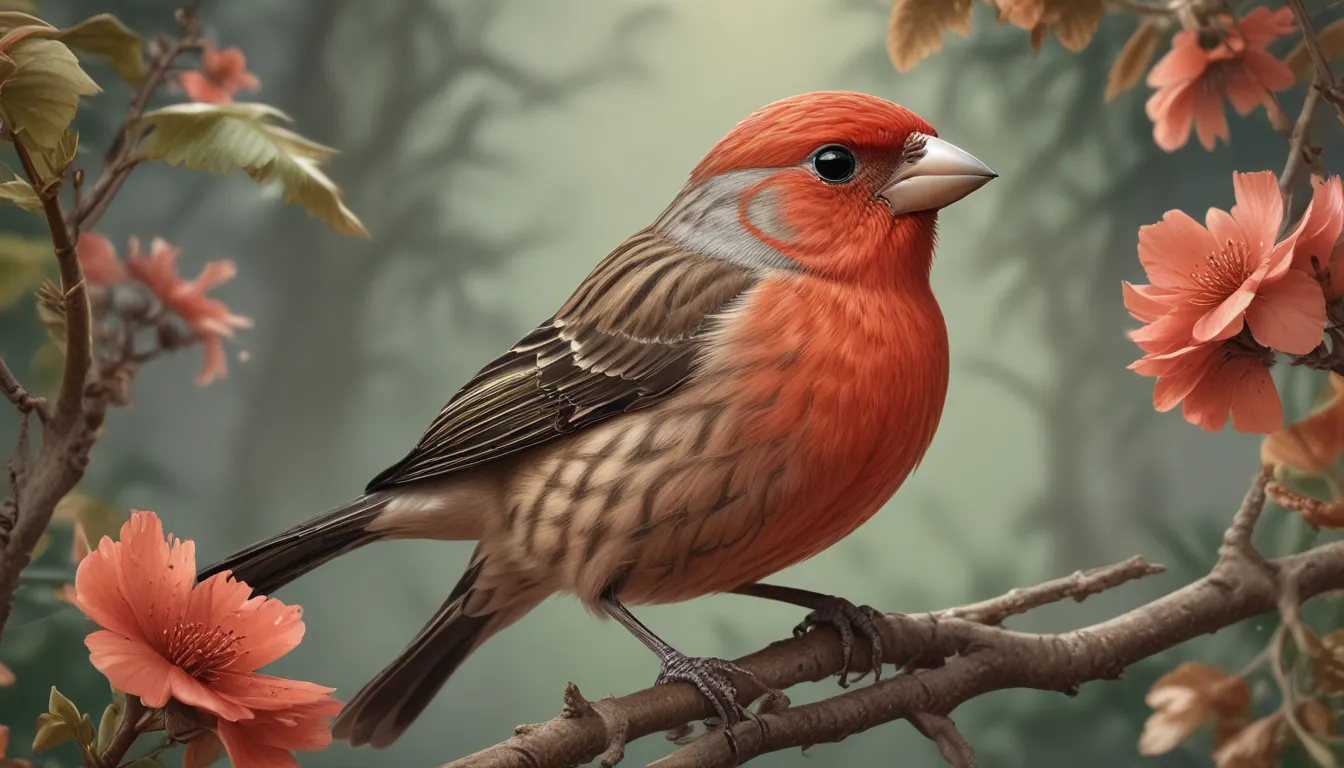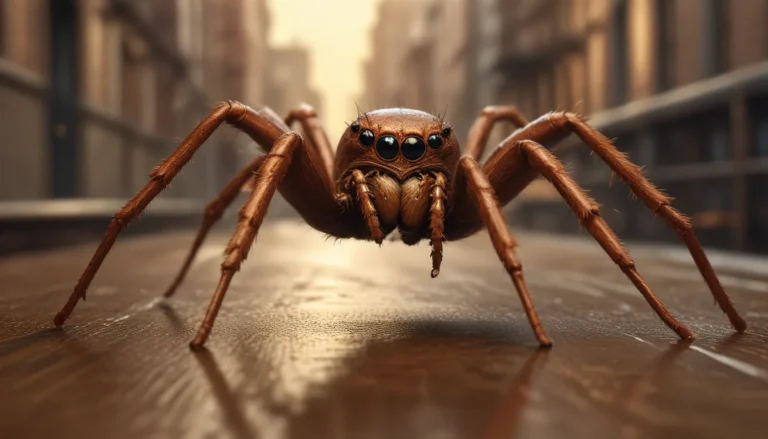The pictures we use in our articles might not show exactly what the words say. We choose these pictures to make you interested in reading more. The pictures work together with the words but don’t take their place. The words still tell you the important facts.
If you've ever caught a glimpse of a small, colorful bird with vibrant red plumage singing its heart out in your backyard, chances are you've encountered a house finch. These charming creatures, also known as "red finches," are a common sight in North American landscapes, bringing joy and beauty to bird enthusiasts and nature lovers alike.
Let's delve into 11 fascinating facts about house finches that will deepen your appreciation for these delightful avian residents. From their unique physical adaptations to their impressive mating rituals, there's so much to uncover about these captivating birds. So grab your binoculars, and let's explore the enchanting world of house finches together!
The Resilient House Finch: A Story of Adaptation and Thriving
The House Finch, scientifically known as Haemorhous mexicanus, is a small bird that originally called the western regions of North America home. However, their adaptability and resilience have allowed them to spread successfully to various parts of the continent, including urban areas and suburban gardens. Their ability to thrive in diverse environments is a testament to their remarkable survival skills.
The Dazzling Male House Finch: A Splash of Red in Nature’s Palette
One of the most striking features of the male House Finch is its vibrant red plumage, particularly on its head and upper body. This dazzling coloration is a result of pigments acquired from their diet, which includes carotenoids found in fruits and berries. The bright red feathers serve as a visual cue of health and genetic strength, attracting female House Finches during the mating season.
The Melodious Musicians of the Avian World: House Finch Songs
House Finches are renowned for their melodious and varied songs, with males using their vocal talents to attract females and establish territories. Their beautiful tunes fill the air with a symphony of sounds, adding charm and character to any outdoor space where they reside.
Nesting with Flair: The Art of House Finch Nest Building
When it comes to nest-building, House Finches are resourceful architects. They construct cup-shaped nests using a variety of materials such as grasses, twigs, leaves, and more. These intricate structures can be found in trees, shrubs, and even man-made structures like buildings and birdhouses, showcasing their adaptability and creativity.
Social Butterflies of the Bird World: House Finch Flocks
House Finches are highly social birds that often gather in flocks, especially during non-breeding seasons. These communal gatherings can range from small groups to larger congregations, providing a sense of camaraderie and companionship among these feathered friends.
A Culinary Adventure: The Diverse Diet of House Finches
House Finches are true omnivores, enjoying a diverse diet that includes seeds, fruits, berries, and occasionally insects. Their versatile palate allows them to adapt to different environments and food sources, ensuring they have a well-rounded and nutritious diet to support their vibrant lifestyles.
Lifelong Connections: The Average Lifespan of House Finches
On average, House Finches have a lifespan of around 4 to 7 years, with some individuals living up to 10 years in captivity. These resilient birds navigate the challenges of the wild with grace and resilience, embodying the spirit of endurance and longevity.
Cavity Nesters with a Twist: House Finches and Nesting Habits
As cavity nesters, House Finches have been observed utilizing abandoned nests left behind by other bird species. This clever behavior allows them to save time and energy by repurposing existing structures for their own nesting purposes, showcasing their adaptability and efficiency in the wild.
Welcome Visitors: House Finches at Backyard Bird Feeders
House Finches are frequent visitors to backyard bird feeders, where they delight in feasting on seeds and grains. By providing suitable food sources, you can attract these colorful birds to your garden, creating a welcoming environment for them to thrive and flourish.
The Urban Explorers: House Finches in Urban Environments
House Finches have proven to be highly adaptable to urban settings, nesting in cities, parks, gardens, and other man-made structures. Their ability to coexist harmoniously with humans showcases their resilience and versatility, making them a common sight in urban landscapes across North America.
In conclusion, House Finches are a treasure trove of fascinating traits and behaviors, from their vibrant plumage and melodious songs to their resourcefulness and adaptability. By delving into these 11 fun facts about house finches, you can deepen your connection to these remarkable birds and gain a newfound appreciation for the wonders of nature they embody.
Next time you spot a house finch perched on your bird feeder or serenading you with its beautiful song, take a moment to marvel at the intricate beauty and resilience of these small yet remarkable creatures. Embrace the magic of the natural world and the joy that house finches bring to our lives.
FAQs: Unveiling More Insights about House Finches
-
What is the average lifespan of a house finch?
The average lifespan of a house finch is around 4 to 7 years, with some individuals living up to 10 years in captivity. -
Do house finches migrate?
While some house finches may migrate in response to harsh weather conditions, most populations are non-migratory and tend to stay in their breeding territories year-round. -
What do house finches eat?
House finches have a diverse diet that includes seeds, fruits, insects, and nectar, with a particular fondness for sunflower seeds. -
How do house finches communicate?
House finches communicate through a variety of vocalizations, including melodious songs and calls ranging from soft chirps to distinctive notes. -
How do male house finches attract mates?
Male house finches attract mates through their vibrant plumage, captivating songs, and courtship displays such as puffing up their feathers and performing fluttering flights. -
Where do house finches build their nests?
House finches build their nests in various locations, including shrubs, trees, and man-made structures like birdhouses and ledges. -
Can house finches mimic other bird species?
Yes, house finches can mimic the songs of other bird species, although their repertoire is not as extensive as some other mimicking birds. -
Are house finches protected by law?
House finches are not federally protected by law, but regulations may vary locally. It is advisable to consult with local wildlife authorities regarding specific regulations in your area. -
How can I attract house finches to my backyard?
You can attract house finches to your backyard by providing bird feeders with sunflower seeds, nyjer seeds, or mixed birdseed. Additionally, having a water source like a birdbath can be appealing to these avian visitors. -
Are house finches social birds?
House finches are generally social birds and can often be seen in small flocks, especially during the non-breeding season. -
Do house finches have predators?
Yes, house finches have predators like hawks, cats, and snakes. They rely on their alertness and ability to quickly take cover to evade predation.
At the core of our mission lies a dedication to delivering accurate and engaging content that enriches your understanding of the natural world. Each tidbit of information shared on our platform is a testament to the collective knowledge and passion of our community. Explore, learn, and marvel at the wonders of nature with us as we continue to uncover the beauty and complexity of the world around us.






